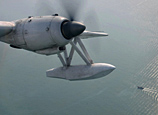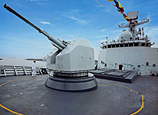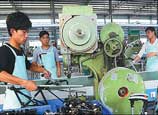
WHEN China's mainland raised gasoline prices on Monday, pump rates were cut in Taiwan.
The dichotomy, a result of different fuel pricing regimes, underscored for many the urgent need for China to improve its fuel pricing mechanism.
The National Development and Reform Commission, which sets energy prices on the mainland, raised fuel prices by more than 3 percent after the 22-working day moving average of Brent, Dubai and Indonesia's Cinta crude benchmarks rose more than the trigger 4 percent.
It was the first adjustment in prices since November.
Meanwhile, across the Taiwan Strait, CPC Corp, the island's oil company, reduced gasoline pump rates by just over 1 percent from Monday to reflect what it cited as lower global crude prices.
The simultaneous changes took the price of a liter of 93-octane gasoline to 7.99 yuan, or about US$4.85 per gallon, in Shanghai and the price of 92-octane unleaded gasoline in Taiwan to the equivalent of 7.25 yuan.
Shanghai's rates are among the highest in mainland cities because of higher fuel standards. Taiwan's fuel prices are among the lowest in Asia.
Mainland motorists took umbrage.
"I always thought that the two sides were separated by a strait; only now do I understand they are actually separated by the NDRC," Li Chengpeng, a prominent writer and social critic, wrote on his Weibo microblog, which has nearly 6.8 million followers.
Li said fuel prices on the mainland and in Taiwan should be roughly uniform.
The development and reform commission defended its decision. It said higher crude prices, arising from expectations of improved economic conditions in the United States and Europe, and from upheavals in the Middle East, allowed it to raise fuel prices under the current pricing mechanism.

















 China's 'leftover women' phenomenon arouses heated debate in West
China's 'leftover women' phenomenon arouses heated debate in West


![]()
